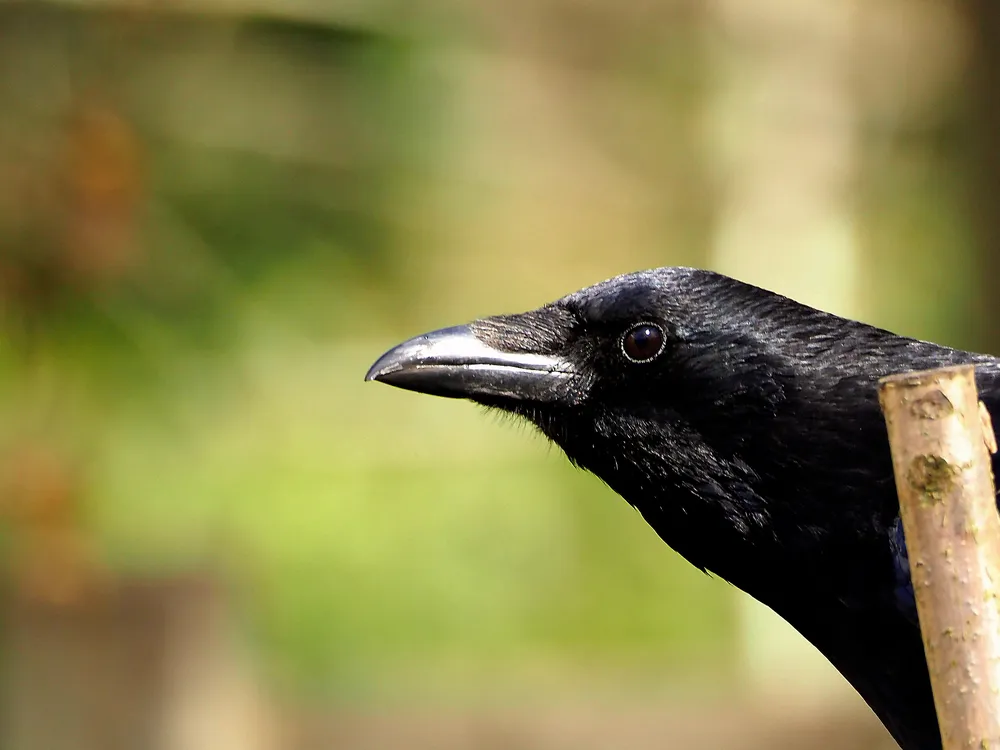Crows Can ‘Count’ Up to Four Like Human Toddlers, Study Suggests
Three carrion crows engaged in a simplified version of counting when prompted, and the birds showed signs of planning out their responses

Carrion crows, European relatives of American crows, are known for their smarts. Scientists have found they can recognize human voices and comprehend a linguistic pattern once thought to be unique to humans. Now, the brainy birds have shown mathematical prowess: They can vocally count up to four, new research suggests.
In a study published last week in the journal Science, a team of researchers found that carrion crows utilize a verbal tally system to engage in a simplified version of “counting.”
“Humans do not have a monopoly on skills such as numerical thinking, abstraction, tool manufacture and planning ahead,” Heather Williams, a biologist at Williams College who was not involved in the study, tells CNN’s Scottie Andrew. “No one should be surprised that crows are ‘smart.’”
In this stripped-down form of “counting,” the number of vocalizations (or caws) is what matters. If, for example, three albums by the rock band Counting Crows were set on a table, a crow might count them by saying “caw, caw, caw”—three vocalizations that correspond to three albums.
Human toddlers pass through this developmental stage before they come to grasp the abstract concept of what numbers truly mean. For instance, a child might tally the three albums as “one, two, three” or “one, one, one,” rather than automatically saying “three.”
To understand if and how crows could comprehend this basic way of counting, scientists at the University of Tübingen in Germany put three birds to the test. They trained the trio of crows to caw between one and four times in response to a particular audio recording that was played—a frequency sound corresponded with four caws, a drum roll with three, a cash register noise with two and a guitar chord with one.
In another trial, they showed the crows a screen that displayed the Arabic numeral of the number of caws (one, two, three or four) they were to vocalize. With both experiments, after producing their intended number of vocalizations, the crows were trained to tap the screen to signal they were done. When they counted correctly, the crows got rewarded with a mealworm.
Scientists found the crows were correct more times than not, especially when prompted to produce lower numbers of vocalizations. The birds boasted a 100 percent accuracy rate at counting to one, a roughly 60 percent success rate at counting to two and about a 50 percent accuracy rate for three.
Crows particularly “disliked” the number four (40 percent accuracy), sometimes refusing to caw at all when prompted and pecking at the screen to end the trial immediately, study co-author Diana Liao, an animal physiologist at the University of Tübingen, tells Science’s Virginia Morell.
Additionally, the crows paused before cawing correctly, showing longer reaction times before producing higher totals of vocalizations. This is evidence of pre-planned responses, the team says, and is especially interesting.
“To me, that’s the most important finding,” John Marzluff, a wildlife biologist at the University of Washington who was not involved in the study, says to Science. “The longer reaction time suggests the birds had to think, organize and encode the electrical signal from the brain to the muscles for calling. The delay is consistent with mental planning.”
The study’s results add further evidence that certain bird species may communicate numerical information. For instance, a 2005 study of black-capped chickadees—birds named for their “dee” vocalizations—found the animals changed the number of “dees” in their alarm calls based on the size of the predator, with smaller predators prompting more sounds.
Next, the authors want to learn how crows might use this “counting” ability in the wild and possibly identify which parts of the brain are involved in it. This research could help shed light on the evolution of an ability that humans and crows seem to share.
“The avian lineage diverged from the primate lineage over 300 million years ago,” Liao tells Popular Science’s Lauren Leffer. “We’ve evolved dramatically different brain architectures. It would be so interesting to see how different brains come up with similar behaviors.”

